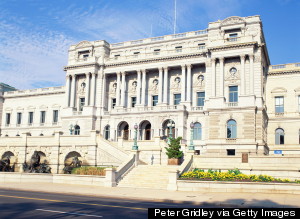The short excerpt below is from A.W. Tozer relating to conditions at the "end of the age". He quotes a prophecy from Matthew 23 which references Jerusalem as the city that "kills the prophets". That would also be Mystery Babylon, the city "drunken with the blood of the martyrs, and the blood of the saints...". Revelation 17:6. The clip below is part of a series by Chris White explaining why, according to the scriptures, Mystery Babylon, the woman that rides the Beast (Antichrist), is indeed Jerusalem.
“Let me go out on a limb a little bit and prophesy. I see the time coming when all the holy men whose eyes have been opened by the Holy Spirit will desert worldly Evangelicalism, one by one. The house will be left desolate and there will not be a man of God, a man in whom the Holy Spirit dwells, left among them…
I hear Jesus saying…Mat 23:37-38: “O Jerusalem, Jerusalem, the one killing the prophets and stoning those who are sent to her, how often would I have gathered your children together, even as a hen gathers her chicks under her wings, and you would not! Behold, your house is left to you desolate”
As the Church now stands, the man who sees this condition of worldly evangelicalism is written off as somewhat fanatical. But the day is coming when the house will be left desolate and there will not be a man of God among them. I would like to live long enough to watch this develop and see how things turn out. I would like to live to see the time when the men and woman of God – holy, separated and spiritually enlightened – walk out of the evangelical church and form a group of their own; when they get off the sinking ship and let her go down in the brackish and worldliness and form a new ark to ride out the storm.”
-Source- www.sermonindex.net
“Let me go out on a limb a little bit and prophesy. I see the time coming when all the holy men whose eyes have been opened by the Holy Spirit will desert worldly Evangelicalism, one by one. The house will be left desolate and there will not be a man of God, a man in whom the Holy Spirit dwells, left among them…
I hear Jesus saying…Mat 23:37-38: “O Jerusalem, Jerusalem, the one killing the prophets and stoning those who are sent to her, how often would I have gathered your children together, even as a hen gathers her chicks under her wings, and you would not! Behold, your house is left to you desolate”
As the Church now stands, the man who sees this condition of worldly evangelicalism is written off as somewhat fanatical. But the day is coming when the house will be left desolate and there will not be a man of God among them. I would like to live long enough to watch this develop and see how things turn out. I would like to live to see the time when the men and woman of God – holy, separated and spiritually enlightened – walk out of the evangelical church and form a group of their own; when they get off the sinking ship and let her go down in the brackish and worldliness and form a new ark to ride out the storm.”
-Source- www.sermonindex.net
See the rest of the videos in this study here - https://www.youtube.com/user/hiswaysarehigher/videos?view=0&shelf_id=0&sort=dd













